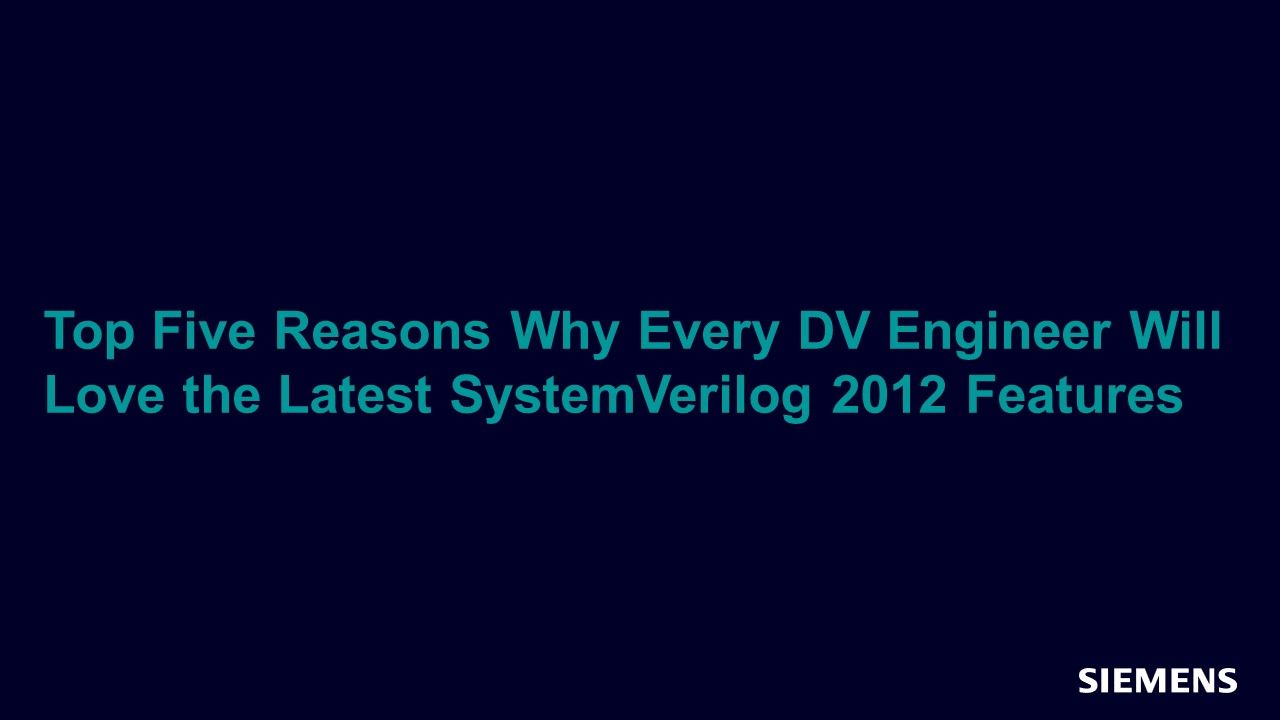Top Five Reasons Why Every DV Engineer Will Love the Latest SystemVerilog 2012 Features
SystemVerilog has become the most widely deployed Verification language over the last several years. Starting with the early Accellera release of 3.1a standard, the first IEEE 1800-2005 standard fueled the widespread adoption in tools and user base. Since 2005 there is no look-back to this "all encompassing" standard that tries to satisfy and do more for RTL Designers and Verification engineers alike.

Full-access members only
Register your account to view Top Five Reasons Why Every DV Engineer Will Love the Latest SystemVerilog 2012 Features
Full-access members gain access to our free tools and training, including our full library of articles, recorded sessions, seminars, papers, learning tracks, in-depth verification cookbooks, and more.